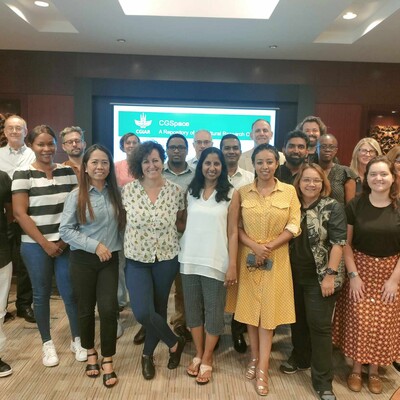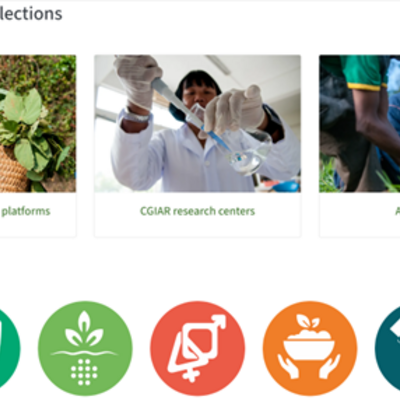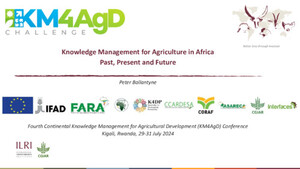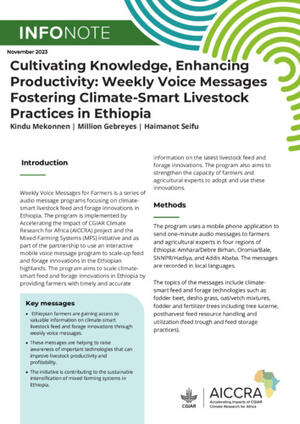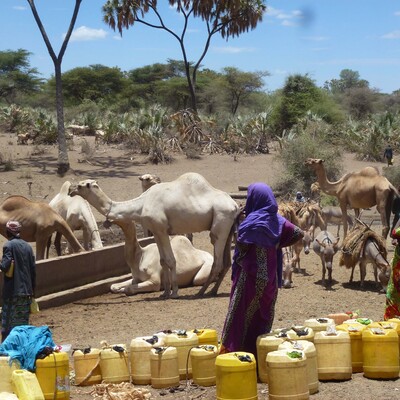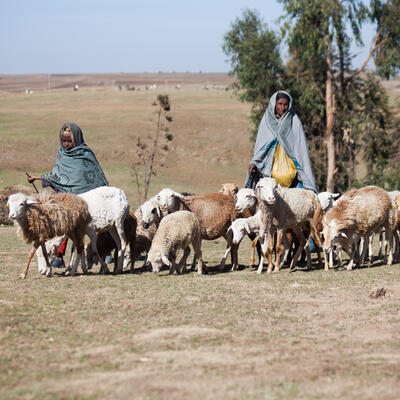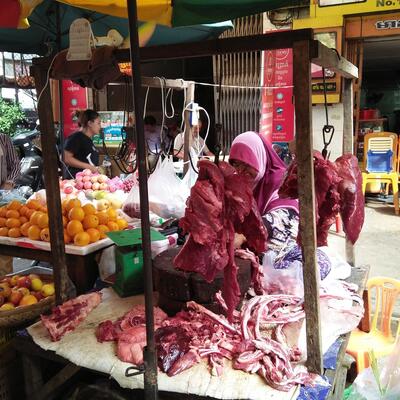
Social learning at the AgKnowledge innovation process ShareFair
Social Learning is, almost by definition, a form of Slow Learning (http://www.euforicservices.com/2010/10/slow-knowledge-and-mck-snacks-at.html). Yet post-event evaluations generally happen immediately or soon after completion. And, generally speaking again, evaluations tend to be positive, unless the event has been a disaster – it does happen!
People have enjoyed meeting others, having fun, escaping everyday work and being stimulated with new ideas. And above all, people are full of good intentions – to do things differently, follow up on contacts and change how they work. So we thought it would be interesting to follow up the May 2015 Innovation Process ShareFair some time later, to investigate the longer-term outcomes. What were people saying some months later, when they were back to the grindstone?
As a reminder, the Sharefair happened at the International Livestock Research Institute (ILRI) campus in Addis Ababa, and the event wiki (https://ilri-events.wikispaces.com/2015_Process_ShareFair) has more details about the collaborating organisations, agenda, reports and photos.
Here’s a summary of the event objectives:
“We are constantly seeking process improvements that help us.
 Tackle tough issues through collective actions
Tackle tough issues through collective actions- Collaborate across teams
- Forge and sustain partnerships for impact
- Take interventions to scale
- Engage effectively with local expertise
- Empower different actors
- Develop capacities for innovation and learning
- Facilitate dialogue and conversations
… using these ideas as guiding threads, the share fair will use innovative design, process facilitation, and the active involvement of expert practitioners (and learners), to:
- Showcase, test and assess a set of the most promising ‘process improvements’ known to make (agricultural) research and development activities, programs, and institutes more effective.
- Energize, catalyze and capacitate a wider generation of ‘transformers’ able to take these approaches to scale.
- Help participants develop strong engagement and participatory approaches for problem-solving and foresight.
- Help participants assess progress on the challenges they encounter, individually or collectively.
We built a survey round those aims and received 21 responses. And the responses were gratifyingly positive, as shown below
First we asked about networks: “have participants followed up any of the people or conversations that took place at the Fair and has it led to any concrete activity?”, a question that addressed particularly the second aim above
| Follow up? | Concrete Activity? |
 | 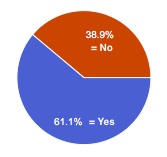 |
And there was an interesting range of follow up actions, including:
- Working on building/developing a book on research for development concepts
- Collaboration on the communication and KM briefs to inform the new CGIAR Research Programmes (CRP).
- “I was able to connect with fellow communicators as well as key scientists and together we continue to share key research outputs collaboratively – I learnt a lot on pitching to policy makers and what strategies not to use. Subsequently, our engagement has somewhat improved”
- 1) Proposal draft for a sourcebook development. 2) Interacted again with a new contact that I have met. 3) tried out some of the liberating structures methodologies.
- Communications Task Force for CGIAR Research Programs
- Developing materials about online and blended meetings
- Working on a digital story for CYMMIT with xx
- Began work with xxxx, yyyyy and others on a book on Institutions for Innovation.
Second, we asked about learning: “is there anything that you learnt, or heard about, or thought about for the first time at the ShareFair that you have since passed onto other people, or tried out in your own work, or means you have or will change something that you do?”, which addressed aim one above.
Again, the responses was strongly positive, with a similarly wide range in the examples respondents provided of learning they remembered and already implemented or planned:
- Different ways of facilitating. How wrong the CG gets research-for-development.
- Looking at developing a new project using participatory radio.
- Lots of support for Liberating Structures methodologies
- Facilitation skills. I used a ‘liberating structure’ facilitation technique for a communications team meeting. It worked and my colleagues enjoyed it.
- Liberating structures M&E for communications and knowledge management
- Have used some liberating structures techniques in meetings
- “I am comfortable with new facilitation techniques which I’ve applied to my work.”
- Facilitating online meetings – plan a lot more carefully and in detail. Improvisation is fun and easy in f2f meetings, less so online
- I’ve connected with others about Participatory Video, submitted 2 proposals around it, with one likely to be funded.
- Better engagement with policy makers for instance by ensuring I pitch key research to the media and organise forums for engaging policy makers
- The way we operate in groups and facilitate was a new learning that involves participatory processes
- I have applied a lot of what I learned in other workshops I have facilitated
So, at the simplest level, the organisers can collectively pat themselves on the back. A lot of people have come away from the ShareFair with new ideas, new facilitation methods, concrete proposals and were motivated enough to follow up. And at the level of social learning it’s interesting to note how many of the examples relate to working together with existing and new groups of people.
“What do we know about the long-term legacy of aid programs? Very little, so why not go and find out?”
What this survey couldn’t explore is different levels of learning, whether and how people have engaged with issues more deeply as a result of the ShareFair. We are particularly interested in whether they got to the deepest levels of reflection and questioning that is often called third loop learning – when people consider the conceptual frameworks that govern our work, and the governance processes themselves, in the context of our overall aims. But that would require both more in-depth investigation, probably some interviews, and the tracking of changes over time. That’s an expensive process, and there has been surprisingly little focus on such long-term tracking in Aid or Development.
As we described in a blog about Social Learning and ‘Africa RISING’, it’s very valuable, in terms of seeing sustained impacts, unintended outcomes and systemic effects, to keep track and learn from ideas, networks and people that move through the succession of programs in any particular locality. Programs that may appear unrelated or only loosely connected are in fact more closely linked once a location lens is applied.
Organisations like ILRI and other CGIAR centres that have worked in themes and geographies over a long period represent an especially rich treasury of possible study and learning. Duncan Green opened up the issue in his May 2015 blog post about the long-term legacy of aid programs, a post that is very much worth reading for the large number of ideas and examples in the comments that followed the blog post.
Do you have any examples of long-term studies tracking social learning over timescales of up to a decade or more?
Post by Pete Cranston, Euforic Services






